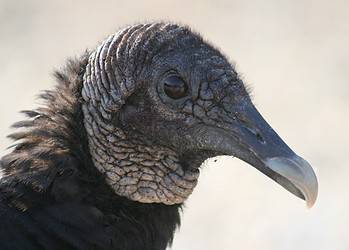
Vultures, hyenas, and other scavengers look ugly and may never win any popularity contests, but these misunderstood animals quietly play one of nature’s most vital roles, cleaning up rotting carcasses before they spread diseases. By feasting on dead bodies, they keep the environment clean, prevent the spread of deadly pathogens, and even save governments millions in waste management.
“There is this prejudice that these scavengers – vultures and hyenas and the like – are nasty animals and that we should get rid of them, but they are important not only for the functioning of ecosystems, but also for human well-being,” Rodolfo Dirzo, a professor of biology at Stanford, said.
However, there is some bad news. A new study from Dirzo and his team warns that these animals are vanishing fast across the world. Over one-third of the scavenger species are facing a sharp decline in their populations, and this isn’t the worst part. Their disappearance is opening the door to an explosion of rats, feral dogs, and other disease-spreading creatures, putting human health at serious risk.
“Scavengers are in decline, but it’s not homogeneous. It is particularly the large and specialized ones. At the same time, this allows space for the smaller scavengers, which are problematic because they are themselves sources of zoonotic diseases,” Dirzo added.
A closer look at scavenger population trends
To understand how scavenger populations are faring worldwide, scientists at Stanford University examined 1,376 species of vertebrates that consume dead animal flesh, or carrion. This list included not just vultures and hyenas, but also eagles, sharks, turtles, and even frogs.
Using conservation records from global databases like the IUCN Red List (a list of threatened species across the globe), the team assessed how these species are doing in the wild. The results were alarming. The study authors discovered that around 36% of scavengers are either declining or already listed as threatened.
The animals most at risk were those that are large-bodied and rely heavily on dead bodies to survive, also called apex or obligate scavengers. For instance, of the 17 species that feed only on carcasses, more than half were classified as vulnerable or worse.
To understand why this matters, researchers looked at how ecosystems responded when these apex scavengers disappeared in the past. One striking example came from India. In the 1990s and early 2000s, the use of a livestock painkiller called diclofenac unintentionally wiped out millions of vultures in the country.
Their huge decline in scavenger population allowed feral dogs to multiply, leading to a rise in rabies infections. The public health systems in India struggled to manage the disease burden as the environment became more polluted with unconsumed carcasses and infections. This chain of unfortunate events led to nearly half a million human deaths between 1992 and 2006.
This case study not only highlights the importance of apex scavengers like vultures but also shows that smaller scavengers cannot replace the role of larger ones. Rodents, raccoons, and stray dogs, known as mesoscavengers, often depend on larger animals to tear open carcasses.
They also consume less and are far more likely to carry diseases that can jump to humans, such as leptospirosis, brucellosis, and cryptosporidiosis.
“The growing number of mesoscavengers, particularly those carrying diseases such as rabies, may further threaten human health. Therefore, addressing the threats to apex scavengers is critical to improving global health,” the study authors note.
These animals are no less than a boon
Apex scavengers are important in not just poor but also developed countries. For example, during a study in 2021, scientists in Wyoming found that eagles and other carcass eaters helped stop the spread of a bacterial disease called brucellosis by eating dead elk calves that had died from the infection.
If those remains had stayed in the environment, the disease could have spread to more elk, to farm animals like cows, and even to people.
Moreover, in places where scavengers thrive, they not only help limit the spread of bacteria, viruses, and parasites but also provide huge economic benefits. For instance, vultures in Spain help farmers save an estimated $67 million per year in disposal costs. Whereas, across the Americas, turkey vultures are believed to prevent up to $1 billion in waste management expenses by consuming massive amounts of dead matter.
However, it’s very unfotunate that despite their crucial role in managing ecosystems and protecting public health, these animals are seen as dirty or dangerous, and are rarely the focus of conservation efforts. Habitat destruction, livestock expansion, and the illegal wildlife trade continue to threaten their populations across the globe.
Also, many apex scavengers are unintentionally poisoned, caught in traps, or displaced by land use changes. In some cases, they eat carcasses containing toxic veterinary drugs or are hunted due to misconceptions that they pose a threat to livestock.
The study authors argue that this needs to change. They recommend stronger protections for scavenger habitats, tighter regulations on harmful drugs, and public education to reduce stigma against these animals.
“We’re starting to understand exactly how we depend on each individual species. I think as we become more aware of these connections, we’re going to be more inclined to protect these species, because, in turn, we are ultimately protecting our health,” Chinmay Sonawane, first study author and a doctoral student at Stanford, said.
Hopefully, the findings from this study will catch the attention of policymakers and the public, sparking action to protect these often-overlooked creatures.
The study is published in the journal PNAS.




